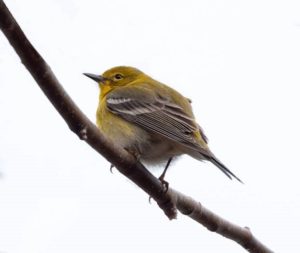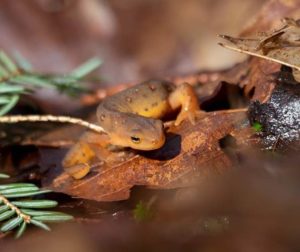So you’ve always wanted to become a citizen scientist?

Now’s the time to brush up on wildlife in your neighbourhood — from home!
Trying to maintain a connection to nature while spending most of our time indoors can be difficult. By becoming a citizen scientist, though, you can strengthen your relationship to nature by learning all about the creatures that live in your neighbourhood. You also help collect important conservation data.
Whether you’ve got a large backyard or a small balcony (or even just a window), it’s the perfect time to start paying attention to the outdoors. All you need is curiosity, a couple of resources (we did the leg work here) and a place to keep track of everything you see, like a field notebook.
Then, you can take these simple steps to becoming a citizen scientist:
Step one: Learn about local wildlife
Find out what kind of wildlife or plant species exist in your area. It’s easy to find resources for your province or territory online. If you’re interested in birds, some good places to start are Birds Canada, the Audubon Society or Birds of North America. Many cities will have guides to help you identify the wildlife in your region, like this one from the City of Toronto. If you’re into plants, check out CanPlant or use the iNaturalist app to help you identify ones you haven’t seen before. Finally, if insects are your thing, you can use eButterfly or Bumble Bee Watch as a starting point.
These resources will help you figure out what to look for as well as how to recognize the defining features of birds, amphibians, mammals, insects and plants that you might see.
Step two: Pick a study area
Whether it’s your backyard, a view from your window, a seat on your balcony or even your once-a-week trip to the grocery store, pick a place where you can monitor the species you see regularly.
Step three: Keep track of things like a scientist
WWF-Canada’s species specialists have been keeping field notebooks for almost their entire lives. They say you should pay attention to not only what you see, but also what you hear. Here’s what they write down in their own field notebooks — these details will help you in step four!
Date:
Time:
Weather conditions (Temperature, cloud coverage, wind, etc.):
Species observed:
Behaviour (What’s the animal doing — building a nest? Carrying food? Singing a tune?):

Step four: Analyze (and even share) your data
Once you feel confident in your ability to track species around you, look for patterns. Do certain species only show up when the temperature goes above a particular degree? Does some wildlife only appear after it rains? Does what you see change with the seasons? Do some species only show up when a given plant is present? These are all questions a biologist would ask!
Once you’re feeling comfortable, you can even add your data to a resource like iNaturalist, an app that not only helps you to identify different species, but also allows scientists to use your observations to better understand conservation science. There are many local resources like this. Found lots of birds? Submit your data through eBird or the Christmas Bird Count. Find yourself on the East Coast? Let us know when you find capelin rolling on the beach by logging on to ecapelin.ca.
Citizen science allows you to learn more about what you’re interested in and strengthens your relationship to nature!

